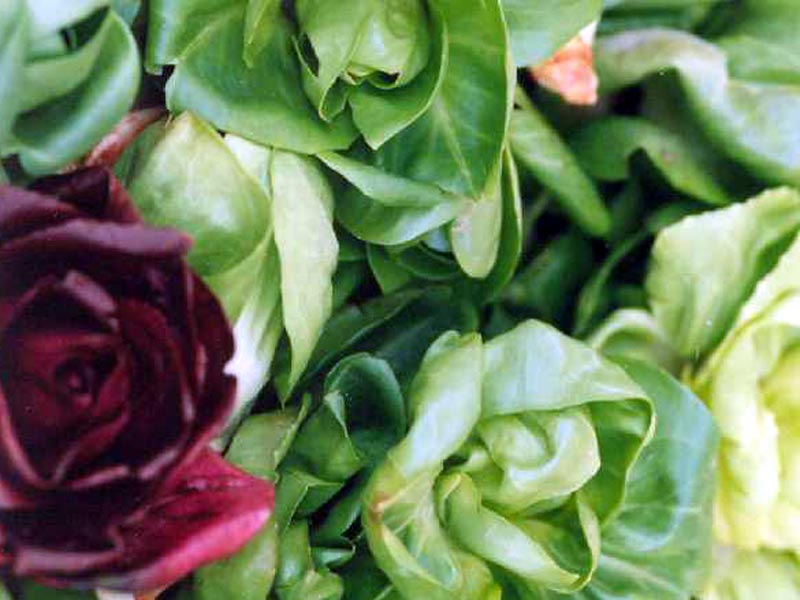A niche product announcing spring, that has been gradually rediscovered. It looks like a tiny rose and is sown under the vineyard rows, at the edges of the fields. The event/exhibit "Radicio verdòn da cortèl e tabari", held in Piazza dei Signori in Treviso in mid-May, has become a traditional event.
Congréga del Tabaro, an association formed by those owning the famous grandpa's mantle, organizes the event thanks to the Municipality of Treviso, Coldiretti, and Soppressa trevigiana Consortium, Pedemontana of Trevigiano Olive oil, Trevigiano rabbit, the milk and cheese producers of Veneto, chicken and snail producers, and the producers of the ancient autochthonous wines of the Province of Treviso.
During the event it is possible to taste the products of the tradition of Veneto usually eaten together with this delicate and particular vegetable product. In the local countryside, radicio verdòn da cortèl has always been the first spring fresh vegetable. It is sown in August-September under the vineyard rows, at the edges of the fields, or in the uncultivated parts of the vegetable garden, and is harvested in March-April. It looks like a tiny and bright green rose, with a diameter of seven-ten centimeters, tasty and crunchy, harvested by hand with the so-called "cortèl" (a sort of knife), removing it from the ground with its long root, the tap-root, also two cm long. It is a forgotten vegetable, second to the most famous regional radicchio varieties (radicchio from Treviso, Castelfranco, and Chioggia). Despite this, it has been recently rediscovered above all in the area of Treviso.
Cultivation Area
Pale green radicchio or verdòn da cortèl is cultivated in thirteen Municipalities: Treviso, Quinto di 'Treviso, Zero Branco, Casale sul Sile, Preganziol, Casier, Ponzano Veneto, San Biagio di Callata, Monastier, Paese, Istrana, Silea, and Roncade, where it has become the protagonist of a two-day event held in early March. It is an interesting product from an economic point of view: the holdings involved are over 60, with 100 hectares used. It is a fresh product to eat soon, since it cannot be preserved in the fridge.
This feature enhances its physical and organoleptic features: it contains more proteins than beans and meat, as well as potassium, calcium, and iron, more than asparagus and spinach.
A traditional product to rediscover at table for a complete and balanced diet.
Territory involved by the production
Province of Treviso, in the Municipalities of Quinto di Treviso, Zero Branco, Casale sul Sile, Preganziol, Casier, Ponzano Veneto, Roncade, San Biagio di Callalta, Monastier, Paese, Istrana.
(research carried out by Lieta Zanatta)






